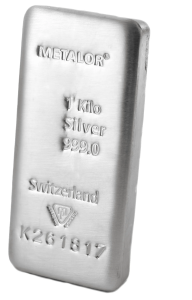The UK interest rate rise
On Thursday 2nd November, the Bank of England raised UK interest rates for the first time in over a decade. This doubles the interest rate, with a rise from 0.25% to 0.5%, re-establishing the rate, which was cut in June 2016 due to the Brexit decision. The 0.5% rate had previously been in place since 2009 following the financial crisis.

Why the increase?
The Bank has raised interest rates primarily to stifle surging inflation at a time of stagnating wage growth. The UK Consumer Prices Index currently stands at 3% which is its highest since April 2012, some Analysts have predicted this could rise to over 5%. This decision by the bank is aimed at calming down UK spending by reducing the demand for services and goods.
The inflationary rises are largely caused by the weakness of £ sterling following Brexit and also a slowdown in the UKM economy. If interest rates were kept at 0.25% it would only make inflationary pressures worse in the minds of the Bank.
Impact of the interest rate rise on consumers
The impact of the rate rises is obvious in that borrowers suffer, whilst savers benefit! This is because many millions of UK mortgages and savings accounts are based on the base rate of the Bank of England. Within hours of the announcement, the FT reports that Lloyds Bank, Royal Bank of Scotland, Santander, TSB and Yorkshire Building Society had all revised changes to both their mortgages and savings account rates.
Outlook for borrowers
In the UK, 43% of homeowners have either variable or tracker type mortgages, both of which will see an almost immediate increase in mortgage rates. This is bad news for UK households with mortgages in the run-up until Christmas.
Outlook for savers
Conversely, the news for savers is welcomed as many will see an immediate 0.25% increase in their variable rate based savings accounts. This will particularly benefit many pensioners in the UK.
Gold investment for savers
Gold and other precious metals investment are often said to be a hedge against inflation, we have previously written about this ourselves here. Now then, could be a great time for savers to invest in gold with some of their increased income from savings accounts following the rate cut. Diversifying investments (particularly in times of inflationary pressure) is always a wise idea.
Low priced investment options
For borrowers facing an interest rate rise, all is not lost! Gold and precious metal investment needn’t cost a fortune, below we list two investment options all costing less than £300 each at the time of writing:
- Tax Free Gold – Elizabeth II Decimal Portrait Sovereign
- Monthly Savers Account, this starts from only £350 per month
Discuss the interest rates with Physical Gold
If there is any aspect of the UK rate rise you’d like to discuss about precious metals investment, then don’t hesitate to call us on 020 7060 9992 for a friendly discussion. Also, feel free to email us using our contact form for an early reply.
Image Credit: Bank of England








